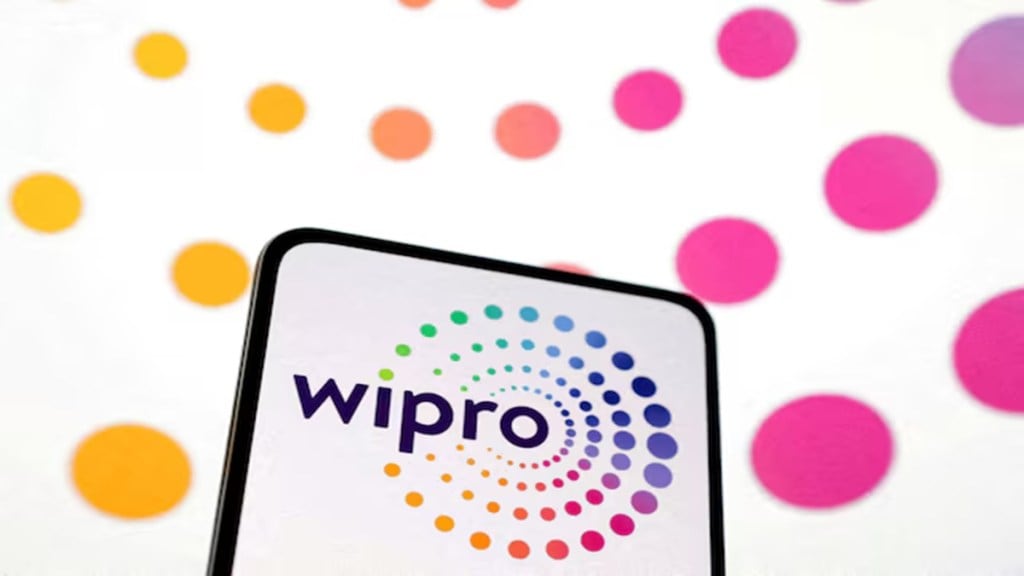The country’s fourth-largest IT company Wipro on Friday reported a sequential increase both on the revenue and profit front in the quarter ended in December on the back of improved demand in the US market and the banking, financial services, and insurance (BFSI) vertical. The numbers were also was above Bloomberg consensus estimate.
Consolidated revenue rose 0.1% quarter-on-quarter to Rs 22,318.80 crore. This was above Bloomberg estimate of Rs 22,221 crore. Net profit rose 4.5% to Rs 3,353.8 crore, which was also above estimates of Rs 3,060 crore.
The company also revised its revenue growth guidance for Q4 at (-) 1% to 1%. This is higher than (-) 2% to + 0% guided for Q3.
“We are more hopeful and resilient for 2025. Our clients are cautiously optimistic, and we see discretionary spending slowly coming back. While cost optimisation continues to remain, we also see significant opportunities in AI spending,” Srini Pallia, chief executive officer and managing director of the company said in the post earnings press conference.
The company also managed to expand its operating margin, also known as earnings before interest and tax (Ebit), by 70 basis points quarter-on-quarter to 17.5%.
Aparna Iyer, chief financial officer of the company, said: “As far as margin are concerned, this is after absorbing two months of salary increase, and a part of the margin improvement has come from operational improvement that’s driven, both in our core business and in the consulting businesses”.
The Bengaluru-headquarterd company said it won large deals worth nearly $1 billion during the December quarter, and its total deal wins for the quarter stood at $3.51 billion. Wipro considers any deal bookings that are greater than or equal to $30 million in total contract value terms as large deals.
“We are seeing momentum in the smaller and medium-sized deals. The pipeline for the large deals remains strong and we remain optimistic as we look into the next quarter,” she added.
Reacting to the numbers, the American depository receipts of the company rose over 1% on the New York Stock Exchange. In the domestic market, shares of Wipro ended 2.2% lower at Rs 281.70 on the National Stock Exchange.
Sectoral Play
The company’s revenue contribution from its largest vertical BFSI fell 70 bps quarter-on-quarter in the December quarter. Meanwhile, those of consumer sector also fell 20 bps.
“We are seeing demand coming back on discretionary end, especially to BFSI,” Pallia said.
Revenue from its energy, manufacturing and resources and technology and communication fell 10 bps, each, sequentially in October-December. Bucking the trend, revenue from health rose 110 bps.
The company also said it was seeing strong traction in the generative artificial intelligence (GenAI) space, without disclosing its revenue numbers.
“There’s going to be a good amount of spend on GenAI a industries want to use GenAI to transform their operations, infrastructure, and also use GenAI in the context of the software development lifecycle and the process” Pallia said.
On the geographies front the company saw a growth of 150 bps in its Americas 1 and remained flat sequentially in Americas 2. Meanwhile, the revenue from Europe fell 120 bps and those of APMEA fell 30 bps quarter-on-quarter in the December quarter.
Europe as a continent is going through a difficult phase, Pallia said. “What’s coming out of that is that customers are now looking at cost optimization and efficiency. I think that’s the pipeline that we are building in Europe,” he added.
Headcount and Hiring
Wipro’s headcount decreased by 1,157 in Q3, reversing two consecutive quarters of employee additions, taking the total headcount to 2,32,732 employees at the end of the quarter.
Further, the company’s attrition rate rose to 15.3% on the last-twelve-month (LTM) basis in the quarter ended December against 14.5% reported in the last quarter.
The company plans to hire 10,000-12,000 freshers in fiscal 2026, same as that of FY25. Wipro on boarded over 2,500-3,000 freshers in the second quarter. It onboarded 3,000 freshers in the June quarter.
Additionally, employee utilisation fell to 83.5% in Q3 against 86.4% in Q2.


